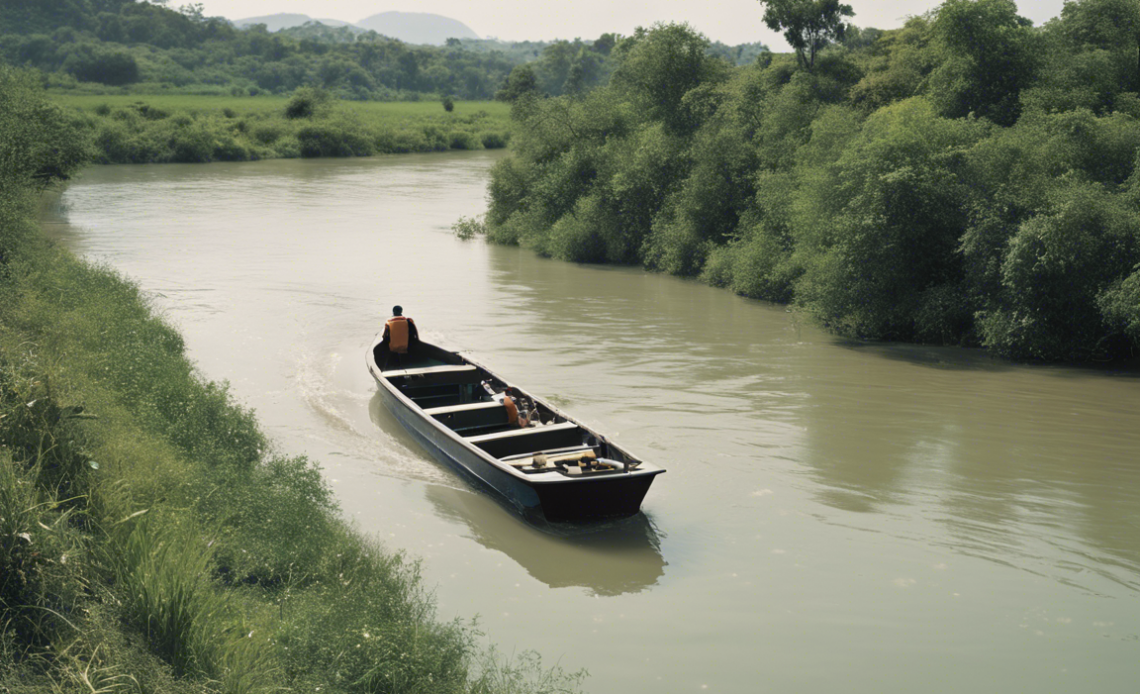
Introduction
When it comes to understanding boat travels upstream, there are various factors, such as speed, distance, and the effect of the water current, that come into play. In this article, we will delve into the scenario where a boat travels 30 km upstream and explore the related concepts in detail.
Understanding the Scenario
Imagine a scenario where a boat travels across a river, against the direction of the current, to reach a specific point located 30 km upstream. The concept of upstream travel refers to the movement of the boat in a direction opposite to the flow of the water. In this case, the boat’s movement will be against the current of the river.
Key Concepts: Speed, Distance, and Time
-
Speed of the Boat: The speed of the boat refers to the rate at which it covers a particular distance. It is represented in kilometers per hour (km/h) or miles per hour (mph).
-
Speed of the Current: The speed of the current is the rate at which the water flows in the river. This speed can either assist or impede the boat’s movement, depending on whether the boat is traveling upstream or downstream.
-
Distance Traveled: The distance traveled by the boat is the total length covered during the journey. In our scenario, the boat travels a distance of 30 km upstream.
-
Time Taken: The time taken for the boat to reach the destination is a crucial factor that depends on both the speed of the boat and the speed of the current.
Calculating the Speed of the Boat
To calculate the speed of the boat when traveling upstream, we can use the following formula:
[ \text{Speed of Boat in Still Water} = \frac{(\text{Speed of Boat} + \text{Speed of Current}) \times \text{Distance}}{\text{Distance Traveled Upstream}} ]
In this case, the boat is traveling upstream, which means it is moving against the current. Therefore, the effective speed of the boat is reduced by the speed of the current.
Example Calculation
Let’s consider an example where a boat is moving at a speed of 10 km/h in still water, and the speed of the current is 2 km/h. If the boat travels 30 km upstream, we can calculate the speed of the boat using the formula mentioned above:
[ \text{Speed of Boat in Still Water} = \frac{(10 + 2) \times 30}{30} = \frac{12 \times 30}{30} = 12 \text{ km/h} ]
Therefore, the speed of the boat in still water is 12 km/h.
Effect of Current on Boat Speed
The speed of the current has a significant impact on the boat’s movement, especially when traveling upstream. A strong current can slow down the boat, making it harder to reach the destination in a shorter time. Conversely, a weak current or no current at all can enable the boat to move at its maximum speed.
Factors Affecting Upstream Travel
Several factors can influence the efficiency of traveling upstream in a boat. These include:
– Engine power: The strength of the boat’s engine plays a crucial role in overcoming the resistance of the water current.
– Boat design: The design of the boat, especially its hull shape and size, can impact its ability to navigate upstream efficiently.
– Weather conditions: Wind speed and direction can affect the boat’s speed and stability during upstream travel.
Tips for Efficient Upstream Travel
- Maintain a steady speed: Consistent speed helps in better navigation and fuel efficiency.
- Keep a lookout for obstacles: Upstream travel may present more obstacles due to the water current, so remain vigilant.
- Use navigational aids: GPS systems and maps can assist in determining the best route upstream.
- Factor in weather conditions: Check weather forecasts and plan your travel accordingly to avoid rough conditions.
FAQs (Frequently Asked Questions)
-
What is the significance of traveling upstream in a boat?
Traveling upstream provides a unique challenge as it involves moving against the natural flow of the water, requiring more effort and skill from the boat operator. -
How does the speed of the boat change when traveling downstream compared to upstream?
When traveling downstream, the speed of the boat is faster than upstream travel, as the current aids the boat’s movement. -
Can the length of the boat impact its ability to navigate upstream?
Yes, longer boats may face challenges in navigating tight spaces or sharper bends when traveling upstream. -
Do different types of boats have varying capabilities for upstream travel?
Yes, boats designed for river or stream navigation may have features that enhance their performance when traveling upstream. -
Is it more fuel-efficient to travel downstream than upstream?
Generally, traveling downstream is more fuel-efficient as the current assists the boat’s movement, reducing the need for higher engine power. -
How does the shape of the boat’s hull affect its upstream travel?
Boats with a streamlined hull design are more efficient at cutting through the water, making them better suited for upstream travel. -
What safety precautions should be taken when traveling upstream in a boat?
Wearing life jackets, avoiding strong currents, and following navigational guidelines are essential safety measures for upstream travel. -
Can water depth affect a boat’s upstream performance?
Shallow waters can impede a boat’s movement when traveling upstream, requiring the operator to navigate carefully to avoid grounding. -
How can one determine the best speed for upstream travel in a boat?
Experimenting with different speeds while considering the current strength and distance to be covered can help in determining the most efficient speed for upstream travel. -
What role does experience play in navigating upstream in a boat?
Experience is crucial for understanding how to handle varying water currents, obstacles, and weather conditions when traveling upstream, ensuring safe and efficient navigation.

